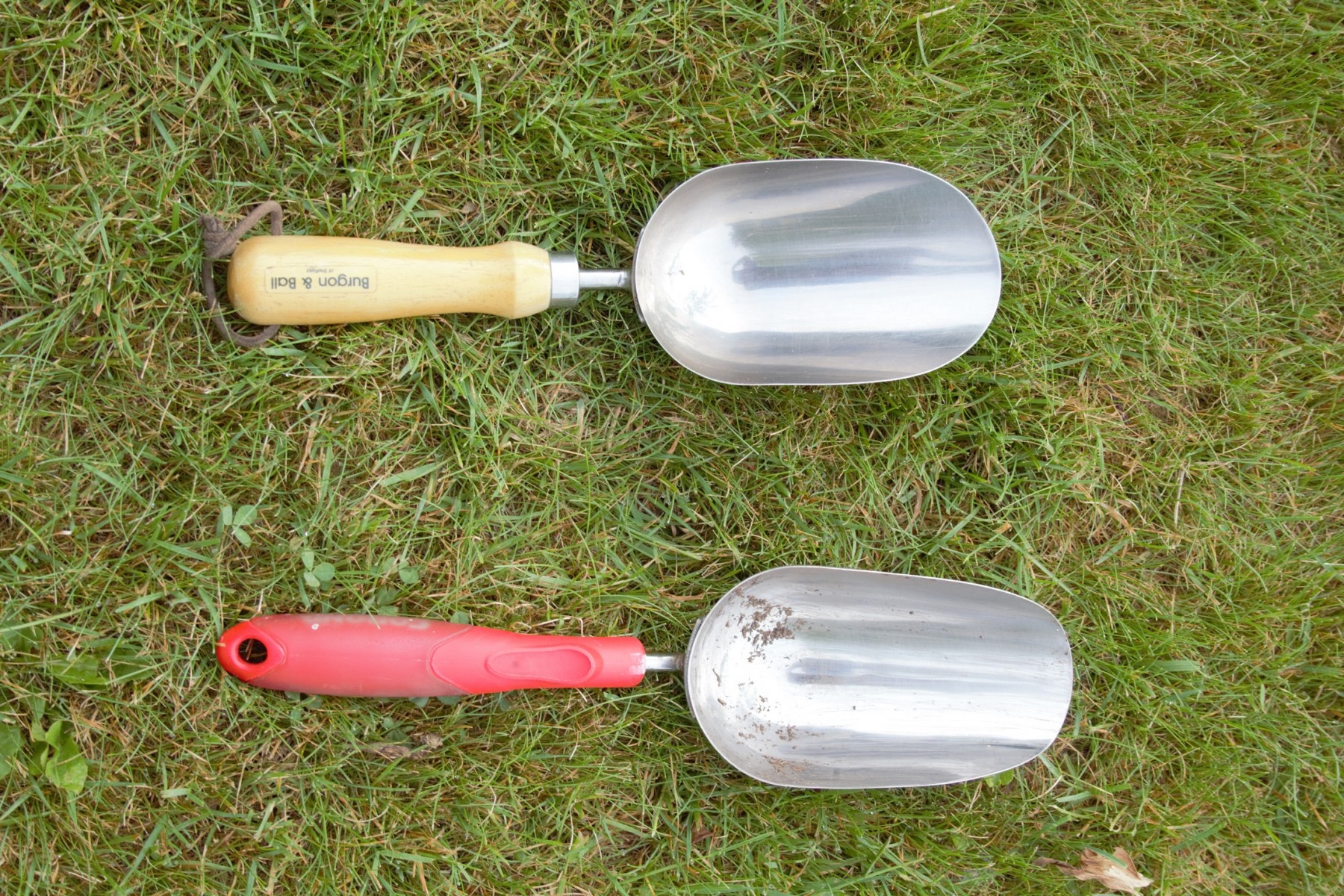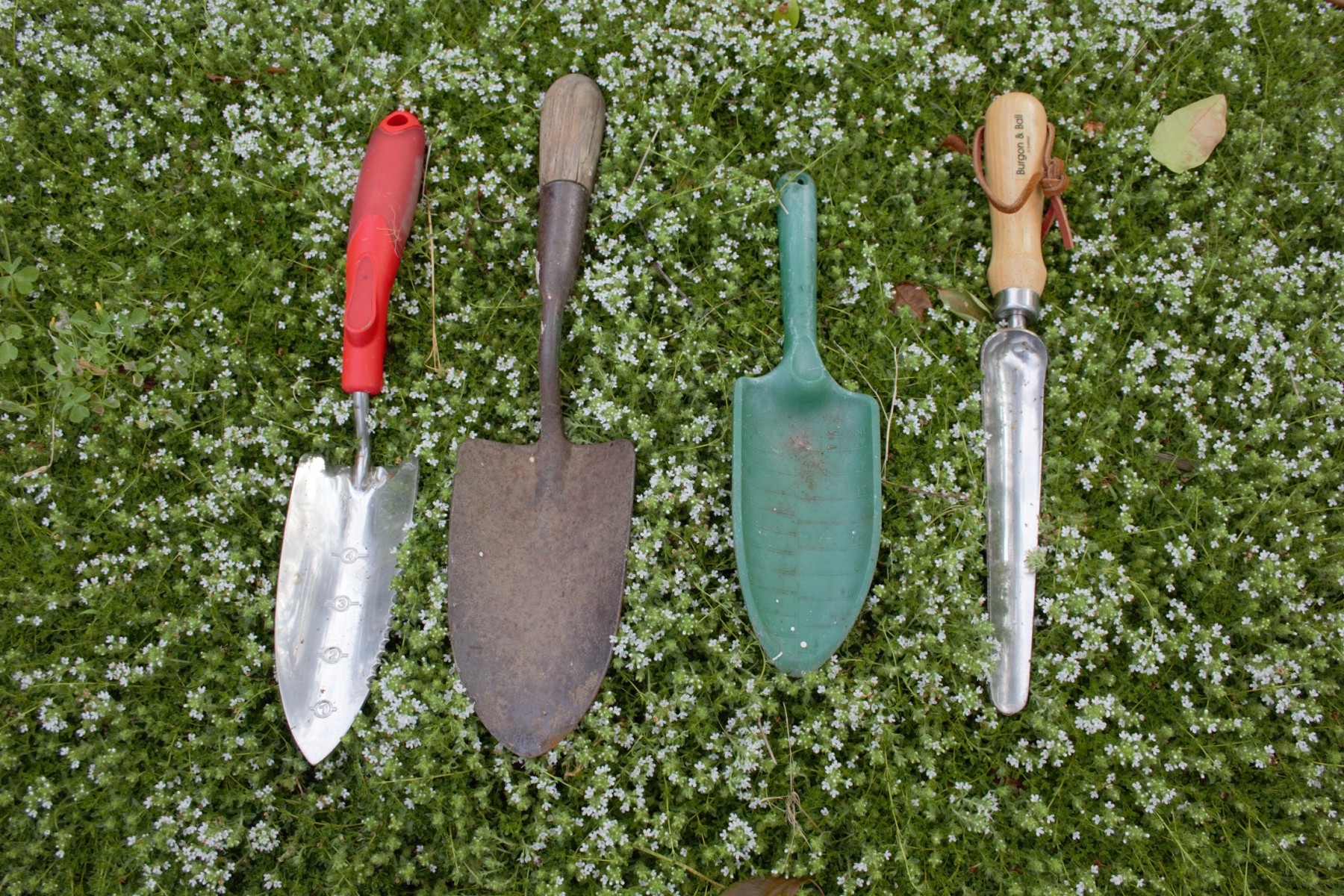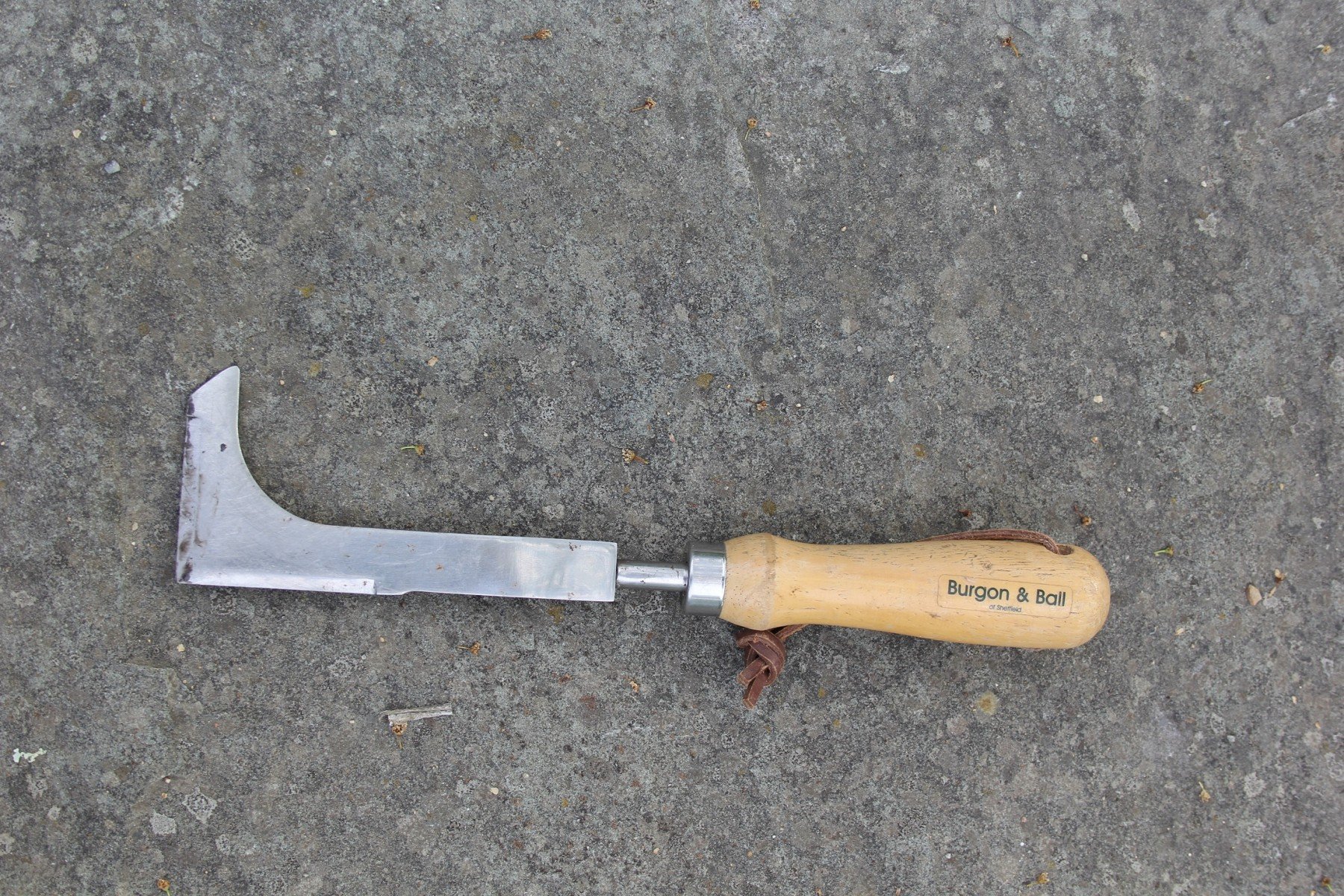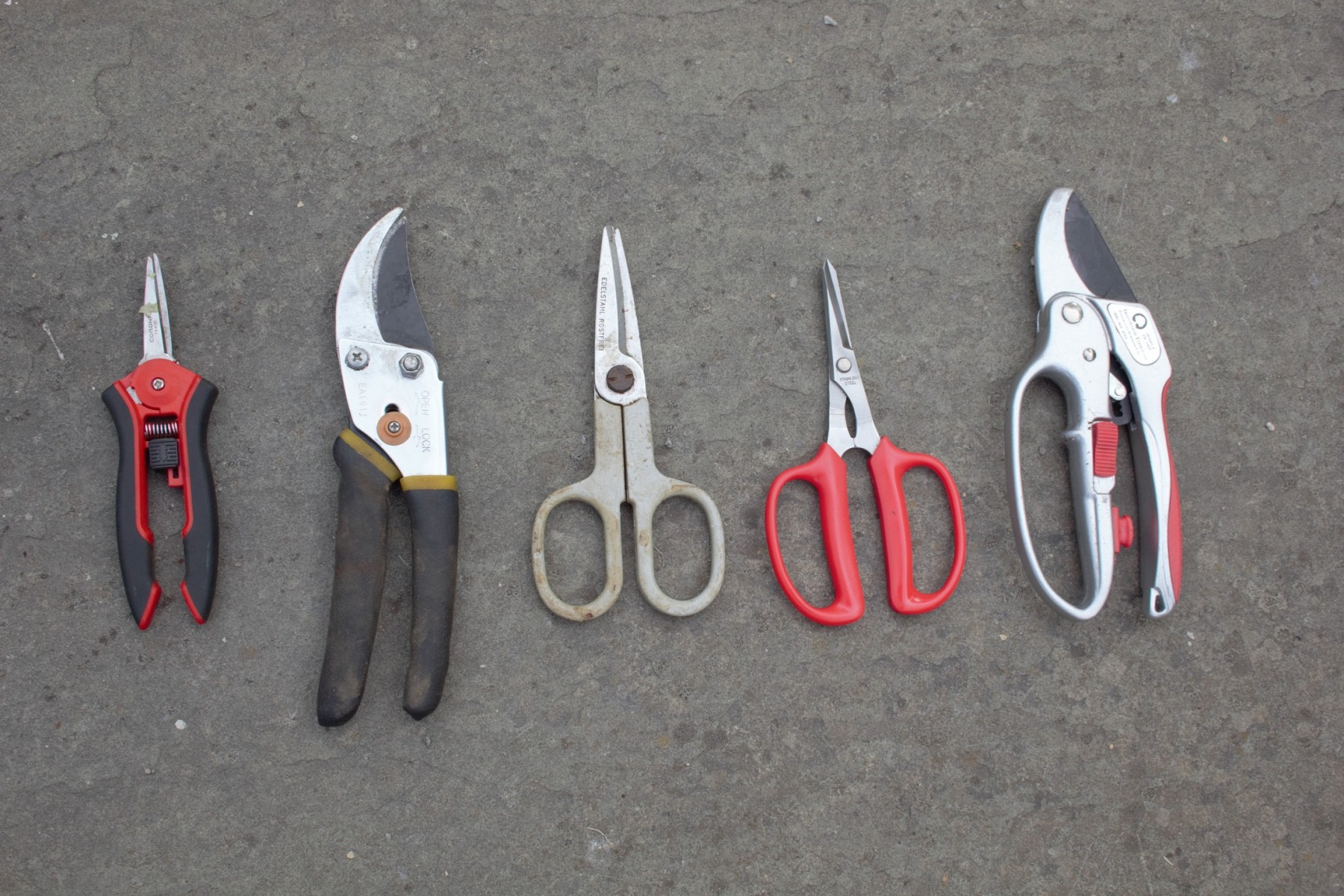
One of the first things you learn when working in a greenhouse is that long-handled tools can be a problem in such an enclosed space. While the tool’s working end is where you want it, the other end may knock pots off shelves, damage plants, or even break window panes. The only long-handled tool I now use in my greenhouse is the window-cleaning tool, and that has an extendible handle. So when buying tools for your greenhouse, buy short-handled ones or ones with handles no longer than 18”.
Specifically, what tools do you need? For me, a moderately large scoop – up to 3 or 4 inches across – is indispensable. It can transfer potting soil from bag to pot, hold small plants that I’m potting, measure out granular fertilizer, and even scoop up plants before dividing them. A moderate-sized scoop should be large enough to hold a sizable amount of soil, but still small enough to fit into a 6” pot. You may also want a larger scoop – up to 9 inches across – if you need to fill larger pots or put mulch around plants.

My next most used greenhouse tool is a trowel. Again, you may want several trowels of different sizes and shapes. A long, narrow trowel can be slid into a root-bound plant pot to ease the plant out, or it can be used to remove a single plant from a pot holding several plants. A shorter, fatter trowel is useful for digging into pots, for replacing washed out soil around plants, and for doing other maintenance chores. You may also like a trowel with a serrated edge. It can cut through the tough roots of a pot-bound plant but be careful because some serrated trowels are sharp enough to cut fingers.
I also find very useful a simple, flat-bladed tool that’s ideal for weeding between bricks in a path, although in a greenhouse this tool has many other uses. It can remove moss from greenhouse shelves, scrape off debris that’s collected on a workbench, loosen soil stuck to seed trays, and even slice into plants that are to be divided.
A sharp knife is handy to have around as well. You can use it to cut string when tying up plants, to remove a bud for grafting, or to cut off dead plant matter. As with all tools, additional uses will undoubtedly come to mind as you set to work in your greenhouse.

Another essential one is a watering can. Select a size that you can lift easily, keeping in mind that a 3-gallon can weighs about 25 to 28 pounds when full. Smaller cans, such as a 1-gallon one with a thin spout, can be useful for watering smaller plants. Even smaller cans, holding only a pint or two, are great for tending plants like African violets, which tend to rot if water gets on their crowns. In this case, don’t use a sprinkler head on the end of the spout. In general, though, sprinkler heads can be helpful in preventing soil erosion. I always turn my sprinkler heads upward so that the water falls more gently, like rain.
Another valuable tool to have in a greenhouse is a small hand rake. It can be used to rake mulch around larger plants, to smooth the surface of soil, and to remove debris from potting tables. If you have growing beds in your greenhouse, you might want a more conventional rake, but be sure it has a cut-down handle, as I recommended last month. A small dustpan and brush is also handy for cleaning up the residue a rake might leave behind.
Scissors, snips, and hand pruners should also be among your greenhouse tools because greenhouse gardeners inevitably need to cut string, prune plants, and snip off leaves or twigs. It’s helpful to have a variety of shapes and sizes. For instance, I have several snips with long thin blades for getting into the base of plants, a pair of heavy-duty pruners that can cut branches up to a ½” thick, and a small pruning saw for very large plants, such as my banana tree.

Yet another handy tool in my greenhouse is a homemade tamper for tamping down soil in seed trays and pots. For my 4”-square pots, my tamper is a ½”-thick square of plywood 3 ¾” on each side with a 1”-diameter dowel screwed into the middle, providing a handle. For my seed flats, my tamper is larger, 6” on each side. Any larger than this tends to be too unwieldy.
These, then, are some of the tools that I find very useful in my greenhouse. You will undoubtedly acquire some favorites of your own. But remember that greenhouses are damp places, so your tools should be made of materials that won’t rust. A solid greenhouse tool made of the right material should last a great many years.


